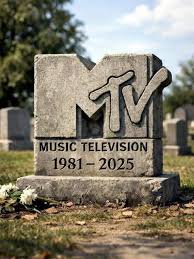It looks like we may be coming to the end of many of the pandemic mitigation strategies that have consumed so much of the world, including our schools. Just this week, my students and I were given the option to remove our masks. Though many continue to wear them – to protect themselves and those around them – it was a welcomed change in my classroom. Thanks to vaccine rates in the northeast exceeding 75% and more and infection rates plummeting, we are slowly returning to some new version of normal.
As we’ve struggled through the past two years of teaching in a pandemic, I’ve heard many justifiable concerns over what this pandemic has done to our children, and it’s true.
Our kids have been through a lot. Fear and anxiety rule the day. Depression and suicide are on the rise. Important time spent learning has been lost. It’s been a devastating time for so many children and their families.
But I’ve also been reminding parents about how lucky we are, too.
If you think the pandemic has been hard on kids, try to imagine how hard racism has been on children of color, both historically and still today.
If you think the pandemic has been hard on kids, try to imagine how hard life must have been for a gay or lesbian or transgender child growing up a decade or two ago, and still today.
If you think the pandemic has been hard on kids, try to imagine how hard life was for disabled and neurodiverse children prior to the Americans with Disabilities Act, IDEA, and all the legislation designed to protect and support these kids.
This is not to say that any of these problems have been solved, either. Not by a long shot. But there was a time, not long ago, when the pandemics of racism and bigotry raged like a wildfire in the American schoolhouse. Less than a single lifetime ago, black and white children in many places in this country did not attend school together. Black and white children were segregated, and it required the National Guard in some places to end this bigoted policy.
There was a time, a hell of a lot less than a lifetime ago, when gay, lesbian, and transgender kids remained silent about their gender and sexuality lest they be ostracized by their communities.
In many places in America, this remains the case today.
All of these issues continue to be enormous problems today, but compared to when I was growing up, things have vastly improved.
My children go to school in racially diverse classrooms. They have black friends. They have friends in the LGBTQ community.
My daughter is a member of an inclusivity club at school, designed to “promote an environment of acceptance and inclusivity within their diverse community and to bring awareness to cultural celebrations throughout the year.”
She’s also a member of Pridefully You, a club “intended to be a supportive space for members of the LGBTQIA+ community and their allies.”
Last night at dinner, Clara referred to one of her friends with the pronouns “them” without missing a beat. Last week she explained to me why one of her peers uses the pronouns she/they. Charlie corrected me on the use of someone’s pronouns last week.
I teach in a classroom in a relatively affluent superb in Connecticut where less than half of my students are white. When my students and I talk about the history of segregation in our country and policies that once removed students with special needs from the general population, we look around and are appalled at how many of us would no longer be together if racism, bigotry, and intolerance still determined school attendance.
The pandemic made school less than ideal from the spring of 2020 through today. It was oftentimes hard, disappointing, infuriating, frightening, and ineffective.
It was especially hard on those who experienced one of those milestone years.
But it also sucked to attend school in 1952 and 1963 and 1981 and 1993 when the mental health needs of a transgender boy or a black girl or a lesbian sophomore or a Peruvian immigrant were often, if not almost always, ignored. It sucked to attend school in a time when white children attended one school and black children attended an inferior school. It sucked to attend school for children with Downs Syndrome who were forced into highly restrictive environments far away from their more typical peers.
This is not to minimize the pandemic caused by COVID-19. I have spent the last two years teaching, so I understand the struggle and suffering. Since the fall of 2021, I have spent every day in a room of two dozen students, masked, socially distanced, and missing so many things that were once integral parts of the fabric of the school day and year. I have watched my students, my colleagues, and my wife get sick and battle this disease. I’ve witnessed the struggles of my own children as the pandemic raged on.
But this is not the first pandemic that our children have suffered. If you’re white and middle class, it may be the first pandemic that you or your children are experiencing, but the losses that your children have suffered over the last two years pale in comparison to the losses once suffered and are still suffered today by children of color, immigrants, kids in the LGBTQ community, non-English speakers, students with disabilities, and many more.
This is a pandemic causes by a virus, but the pandemic of racism, bigotry, and intolerance has been raging for as long as children have attended school. Let’s not forget this as we lament the losses and struggles of the last two years.
My children have lost much. Struggled mightily. Experienced enormous fear and anxiety.
But thank goodness they attended school in 2020 and 2021 and 2022, when they can sit beside a black student and a transgender student and a student of special needs and an openly gay student and a non-English speaking refugee in a diverse classroom predicated on the belief that all children deserve equality and respect.
The COVID-19 pandemic has been indescribably hard, but I’d take this pandemic over the bigoted and intolerant pandemics of the past any day.









